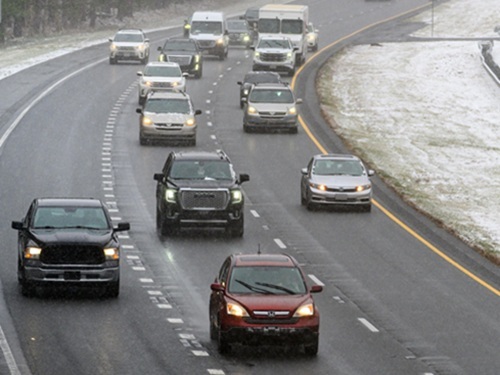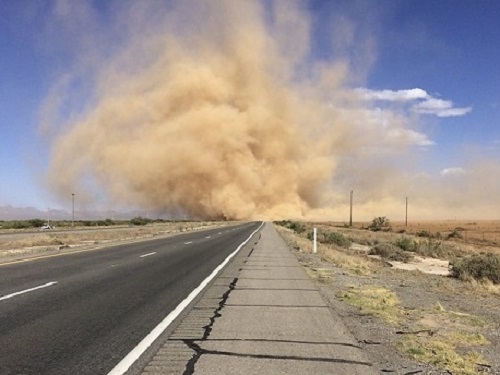A new research paper by the NOAA Air Resources Laboratory determined that dust storms – long assumed to be rather rare and isolated to particular regions – contribute to a larger number of U.S. traffic fatalities than previously thought.
[Above photo by the Arizona DOT]
For that reason, NOAA proposed modifications to the current reporting classifications to more accurately capture the impact of dust storms on traffic crashes and the resulting fatalities and injuries.

Dust storms can panic unprepared motorists, NOAA found, blocking all visibility behind and in front of an automobile, causing drivers to become disoriented or slam into unseen obstacles. Dust on the pavement can also cause vehicles to lose traction and spin out of control, the agency’s research determined.
Dust related fatalities in the U.S. are most frequent in the Southwest where winds from strong thunderstorms kick up dust and sand in desert landscapes, NOAA said. However, dust storms can occur anywhere there’s loose soil and wind. Smaller, more localized windblown dust events often happen when winds cross fallow farmlands, construction sites or dry landscapes in any part of the country.
“We found that dust events caused life losses comparable to events like hurricanes and wildfires in some years,” noted Daniel Tong, a NOAA research scientist and author of this paper who also serves as an associate professor of Atmospheric Oceanic and Earth Sciences at George Mason University.

“Greater awareness could reduce crashes and possibly save lives,” he said in a statement.
NOAA’s dust storm paper – published in the Bulletin of the American Meteorological Society – examined records from 2007 to 2017 and estimated there were 232 deaths from dust storm related traffic events, compared to previous datasets reporting a total of 10 deaths, or a yearly average of one dust storm-related death for the same time period.
Tong said he had “long been concerned” that traffic fatalities from dust storms were being undercounted. “We would see that huge highway crashes had occurred during dust storms, but later when we looked, we didn’t always see those events reflected in the official, national records,” he explained.
His team examined two of NOAA’s own databases, the Storm Events Database and the Natural Hazards Statistics database, known as “HazStats,” as well as the Fatality Analysis Reporting System or FARS database maintained by the National Highway Traffic Safety Administration.

Tong found that labels in these databases varied widely for dust storms and also discovered some states feeding information into the FARS system do not count dust storms at all.
As a result, his team pulled out data regarding fatal crashes from these databases using the keywords “dust” and “sand” as explicitly described in the event narratives. They also created new datasets using mass media reports and social media accounts of dust storms, including those that were part of thunderstorms or other fronts.
By cross-referencing this way, they found that the number of deaths from dust storms ranged from 14 to 32 per year – more than the 10 that had previously been officially recorded over the same decade.
“Dust events pose a more constant risk and are a greater source of weather-related deaths in most years than other, much larger storm systems,” Tong concludes. “Dust storms are sometimes small and local, but we need people to know they can be deadly.”
 Nation
Nation
Registration Open for AASHTO’s Winter Rail Meeting
December 19, 2025 Nation
Nation

